The Hudson River Diaries A Compendium of Poetry and Natural History Gleaned from observations in and around Sparkill, New York |
May 2011 |
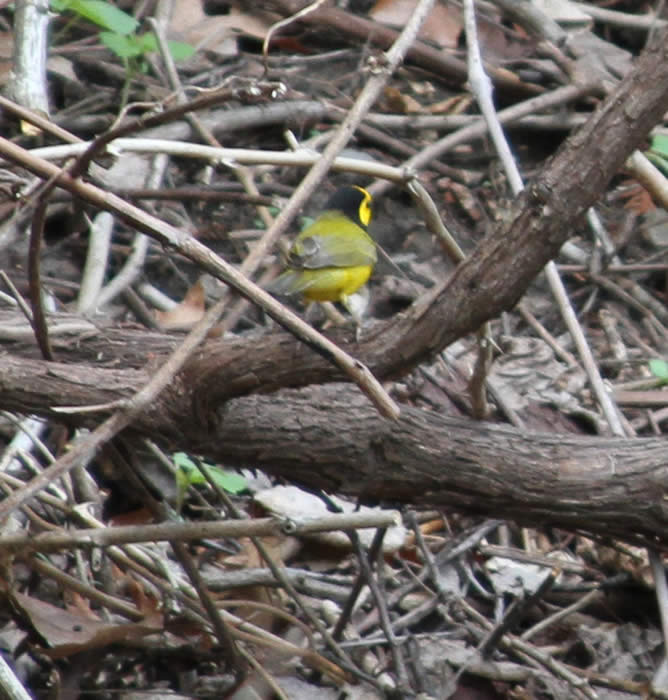 |
This hooded warbler was seen on April 30 on the banks of the Hudson, next to the salt marsh south of Piermont. |
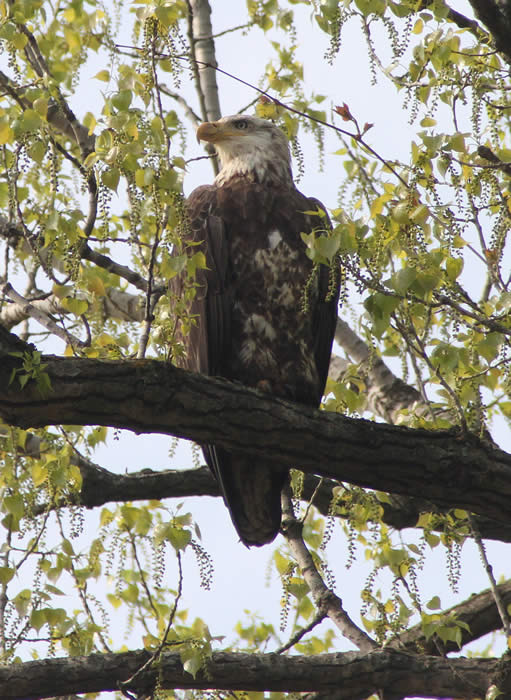 |
May 3. This bald eagle was perching on the edge of the salt marsh at about 9:15 a.m. |
Another view of the eagle |
This female common yellowthroat is in her typical habitat: the understory. These birds are common alongside the salt marsh in Tallman State Park, but they are small, and well-camouflaged. |
Here's the male yellowthroat: equally well hidden at most times, he sports a rakish bandit mask. |
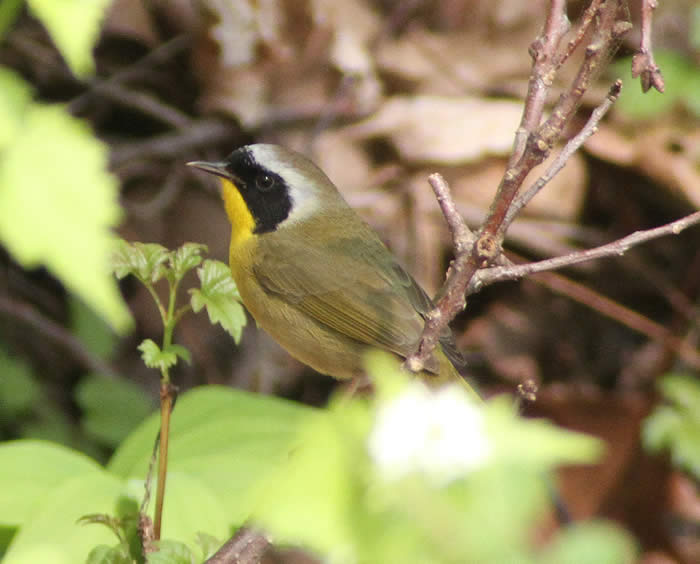 |
Here's a closer look at him. |
 |
The local dogwood is putting on quite a show at this time of year. |
 |
The northern end of Tallman State Park boasts the only salt marsh environment on the Hudson River. Evidence suggests it may have been formed at the end of the last Ice Age--about 10,000 years ago. At that time, enormous amounts of water would have been flowing through the Sparkill gap; one possible explanation is that the effluvia created a delta to the south of the creek along the riverside, fostering conditions for marsh creation. By early May the reeds are beginning to put out the first green shoots of spring. In the fall, Phragmites all throughout the New Jersey Meadowlands send their airborne seeds across the Hudson into Manhattan. It can look like it's snowing on those days. |
 |
Contrasting sun and shadow on last year's fronds make for an intriguing view of phragmites on May 11. |
Japanese knotweed is an invasive species found all over the area. In the buckwheat family, its flowers produce a fine dark honey with a slightly citrus flavor. It's a great plant for beekeepers, because nothing else blooms at the same time, And it provides a huge honey flow. Gardeners are not as appreciative about its virtues. Although the plant is aggressive and easily overtakes gardens, it has its charming points: lush foliage, beautiful red-veined leaves, and abundant flowers in the fall. This doesn't stop most Rockland county residents from indulging in the instinctive urge to destroy it when it appears in back yards. |
The common garter snake is found in abundance along the rocky Palisades. This May 10 sighting was the first one this spring. |
Even the most ordinary snake is a sublime and elegant creature. |
May 15. It's not every day you see a great blue heron (Ardea herodias) catch a freshwater eel (Anguilla rostrata), but that's exactly what happened at the Sparkill pond this afternoon. The catch suggests that elvers are finding a way to circumvent the dam at the bottom of the Sparkill creek (see April 2011 photographs) which is a hopeful sign! |
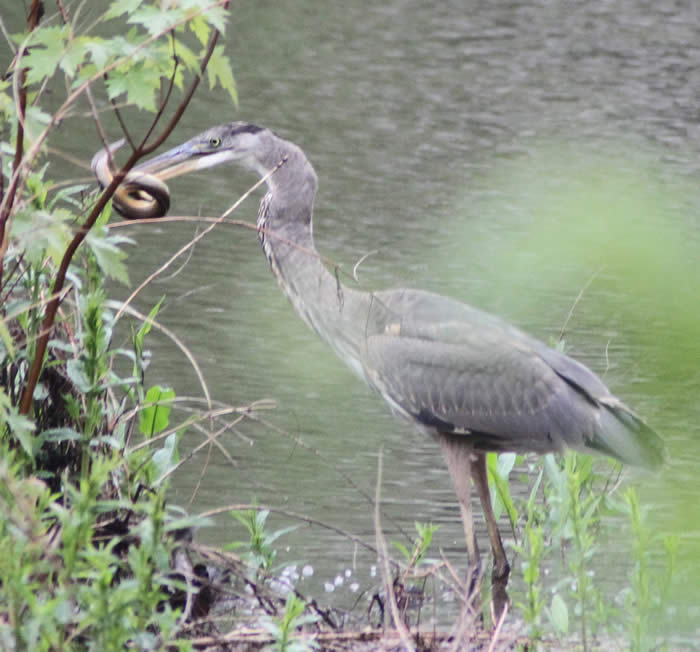 |
An enlargement. |
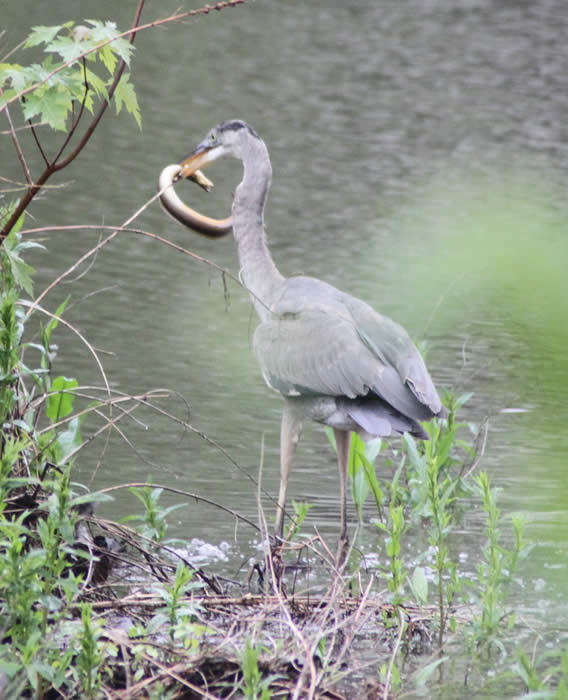 |
and another view. |
The heron realized that he could not swallow his writhing prey in the water, so he immediately flew it to a nearby lawn to do battle on ground of his own choosing. The behavior suggests that herons catch eels often enough to have specific strategies for dealing with them. |
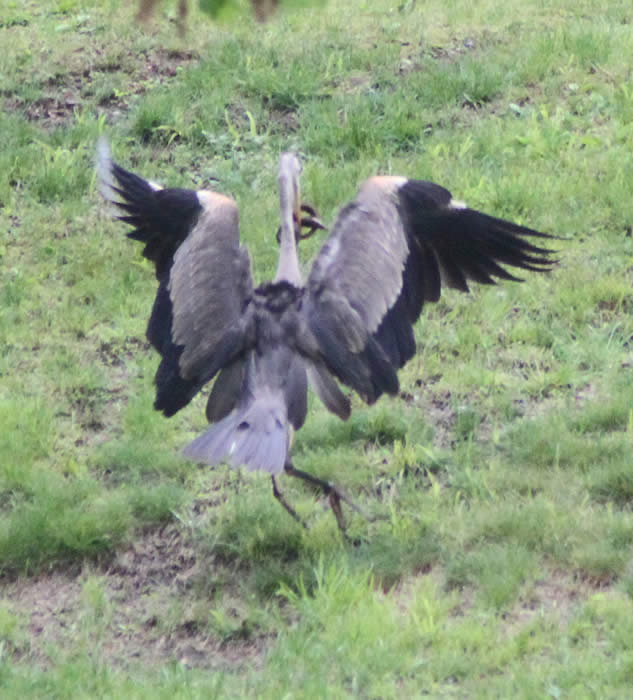 |
Battle of the lawn |
May 16 |
 |
The common egret is frequently seen wading in the Sparkill pond. This photograph was taken on May 16, at about seven o'clock in the morning. |
 |
Our local great blue Heron was out there as well this morning. This particular photograph illustrates how extraordinarily effective his camouflage is in his native environment. |
Up at the top of the Palisades, the canopy has completely leafed out–a radical contrast from two weeks ago, when leaves were just beginning to bud. Individual leaves look (and act) light and airy, but collectively, they form amazingly dense and heavy masses when they are green. We rarely think about it, but the growth of forest canopy represents the net transfer of absolutely incredible amounts of water from the forest floor into the sky. Billions of tons of water are elevated up into the air this way every year, all over the planet. |
The understory has also transformed itself in a few short weeks. |
 |
Neal, making her way up to the top of the Palisades on a staircase originally built in the 1930s during the WPA. This particular staircase is not in good condition, but it is still frequently used by locals. |
The air over the Hudson River is completely saturated with moisture this morning, and clouds lie low across the top of the Palisades on the left, with the village of Piermont in the foreground. The village of Nyack, which lies 4 miles in the distance, is completely obscured by the fog. |
A QuickTime movie taken from the top of the Palisades looking east, including the Piermont pier. Note the ominous clouds low in the sky over the river. The weather lately has been more like the Pacific Northwest than what we are accustomed to in this area; there have been repeated rainstorms, with positively tropical amounts of water being delivered. We are currently awaiting another 3 inches of rain, which is supposed to arrive over the next 24 hours. Scientists recently verified that increased amounts of moisture in the atmosphere due to the melting of ice caps are contributing to atmospheric volatility. We may be on the cusp of a major change in the climate for this part of the United States. It seems more like Seattle than New York. |
A still photograph of the same scene |
Strictly speaking, I'm cheating here, because this photograph was not taken today–I took a few days ago, but it is a companion photograph to the below. The pollinator in this particular dandelion is a native bee of some kind; I'm not a good enough entomologist to let you know which. |
Dandelions get going early, and the first round has already bloomed and set seed by now. They create beautiful starlike forms, remaining attractive even after they have dispersed their seeds. You can still see a few seeds clinging to these dandelion flower heads. |
 |
This lovely flowering shrub is likely a viburnum, possibly witherod, or wild raisin. (viburnum cassinoides.) The stalked clusters of small, 5-petaled flowers are an identifying point. Overall, the cool wet weather has allowed for most of the spring bloomers, including dogwoods and azaleas, to bloom for much longer than usual–three weeks to a month, this year. |
Here again, even after the energy is spent, flowers effortlessly find a way to look beautiful–in this case, under the above shrub, a sprinkling of white petals, like hail on the ground after a thunderstorm. |
This photograph may capture the brooding mood of this lull before the storm better than any other. Here we're looking out over the marsh towards the Piermont pier, which is marked by a low line of trees. The Piermont pier has a whole story of its own to tell, but we will leave that for later group of entries. |
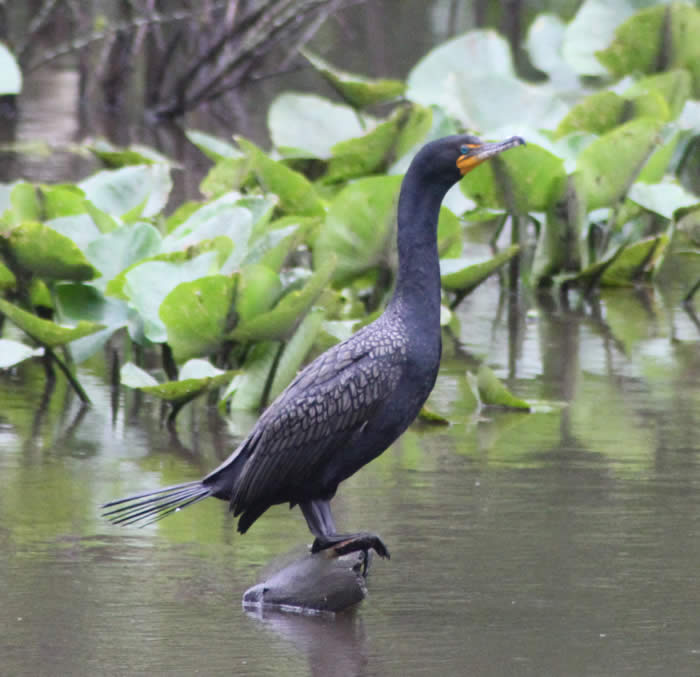 |
The double crested Cormorant, common along the banks of the Hudson River and a sometimes visitor on the Sparkill Creek, is seen in fine form here, perched on a piece of flotsam-- May 17,in the midst of flood waters. |
|